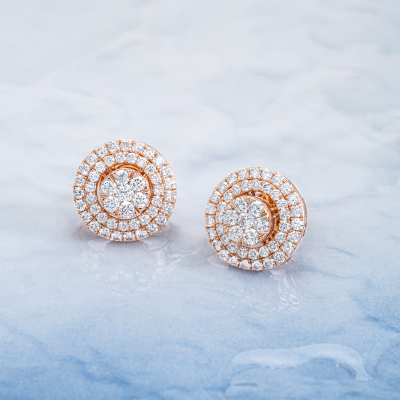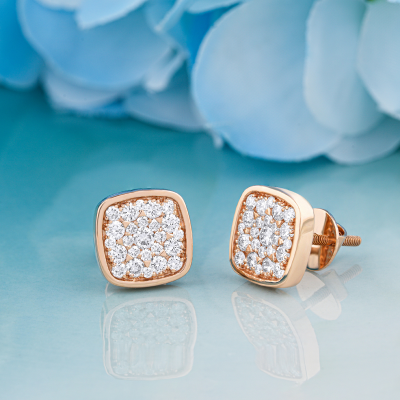The importance of lab grown diamonds in today’s scenario
Lab grown diamonds have increasingly gained a lot of attention from across the globe. From being environmentally-friendly to more cost-effective, it has become the new ‘favorite’ trend among women and in the jewelry industry. So what possibly can be the reasons for this popularity? Let us dive in!
The sustainability of lab made diamonds is one of their most important advantages. In contrast to natural diamonds, these man made stones are created in a controlled setting without the use of mining or environmental damage. Therefore, they are a more ethical and ecologically friendly option for customers worried about the effects of their purchases on the environment. In addition, lab made stones do not require heavy investment in their production process. This benefit is passed on to the consumers as they can purchase them at a cost-effective price.
Due to the high degree of accuracy maintained during lab made diamond production, they can be made with fewer inclusions and with a higher clarity grade than natural diamonds. A variety of colors, including pink, yellow, and blue, is available in man made diamonds, which is not possible with natural diamonds.
Which factors decide the price of lab grown diamonds?
Due to their environmental friendliness and lower price ranges when compared to natural diamonds, lab grown diamonds have become more and more popular in recent years. Although many customers are drawn to the lower costs of lab made stones, it’s critical to comprehend the elements that influence their pricing.
Size:
Just like in the case of real or naturally mined diamonds, a lab made diamond’s size has a significant impact on its price. The price of your laboratory made stone increases with its size. However, consumers can frequently purchase a larger man made diamond for the same price as a smaller natural diamond because lab grown diamonds are less expensive to make and do not require a heavy investment in mining and labor.
Cut:
A diamond’s dimensions and the manner in which it has been shaped and polished are considered to be its cut. A diamond that has been cut well will sparkle and shine more than one that has been cut poorly. The price of a lab made diamond may vary depending on how well it is cut; a well-cut diamonds will be worth more than one that is not. This aspect of man made stone is quite similar to a real gemstone.
Clarity:
The size and the number of inclusions or flaws present in a diamond are referred to as its clarity. Natural flaws, also known as inclusions appear when a diamond is being formed. Although they are usually fewer and smaller than those found in natural diamonds, lab grown diamonds may also contain a certain amount of inclusions in their appearance and structure. A lab made diamond’s price may vary depending on its clarity, with more flawless diamonds being more expensive. In simple words, the higher the clarity grade of the stone made in the laboratory, the more expensive it will be.
Color:
The color of the gemstone describes the existence or absence of a hue in its appearance. Diamonds with yellow or brown tinges are less expensive than colorless diamonds, which are the most valuable. Pink, yellow, and blue lab-grown diamonds are just a few of the many hues that are available in the market and which you can choose from. However, you must remember that transparent or colorless diamonds are the most expensive as they are more in demand.
Method of production:
The two main production processes for lab made diamonds are chemical vapor deposition (CVD) and high pressure, high temperature (HPHT). By exposing a diamond seed to high pressure and high temperature circumstances that mimic the conditions under which natural diamonds form, HPHT diamonds are produced. Diamonds made through CVD are created by chemically placing carbon atoms onto a substrate. Given that they take more energy to produce, HPHT diamonds are typically more expensive than CVD diamonds.
Brand:
Just like with natural diamonds, some brands of laboratory made gemstones may cost more because of their name for excellence and handiwork. Customers are ready to splurge more for lab grown diamonds from renowned and dependable companies. Ayaani Diamonds, one of the most popular names in the jewelry industry, offers a range of lab made diamond jewelry for you to choose from.
Market demand:
The price of laboratory made gemstones can be impacted by their market demand. There is a possibility that the prices for lab made diamonds could rise in the future as they gain more acceptance from people across the world as a feasible substitute for natural diamonds. With more and more people shifting towards environmentally friendly and sustainable products, the day is not far, where people will only prefer to purchase gemstones made in laboratories.
Certification:
Organizations like the Gemological Institute of America (GIA) can certify lab grown diamonds just like they can certify real diamonds. Given that certification guarantees the diamond’s purity and authenticity, a certified lab made stone may cost more than one that is not. It is always advisable to only purchase certified man made stones from popular institutions so as to get the best return on your investment.
In conclusion, while there are several factors that affect the price of lab made stones, you also need to consider your needs and preferences when deciding on your jewelry. By doing so, you can make sure you get the most for your money and a diamond that you’ll appreciate for many years by doing this.










